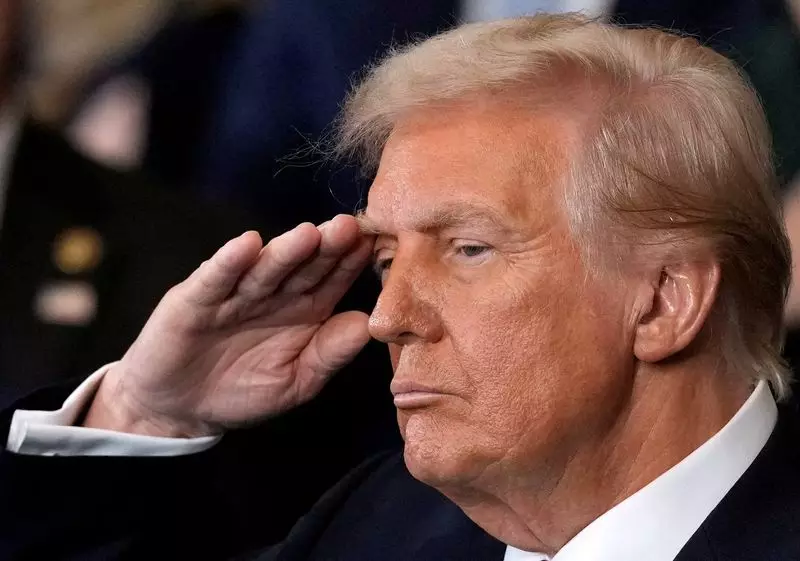As President Donald Trump settled into office, anticipation surrounded his trade policy direction. Rather than launching straight into new tariffs that many expected, his approach seemed more nuanced, suggesting a strategic review of trade relationships with key partners like China, Canada, and Mexico. This shift has profound implications for domestic and international markets, signaling a blend of caution and the potential for aggressive trade negotiations.
In a surprising move, rather than imposing immediate tariffs on his first day, Trump opted to direct federal agencies to evaluate existing trade partnerships. This decision, while disappointing for some who anticipated swift action, heralds a more systematic approach. The memo indicates that the administration would focus on addressing persistent trade deficits and scrutinizing unfair practices. Rather than resorting to sweeping tariffs, which could trigger retaliatory measures from trading partners, Trump showcased a deliberate method of investigation, aiming for a comprehensive understanding of U.S. trade dynamics before taking definitive action.
This methodical approach is indicative of Trump’s recognition of the potential economic repercussions that might arise from hasty decisions. The initial relief rally in global stock markets following the announcement reflects a collective sigh from investors who feared immediate disruptions from abrupt tariffs. The appreciation of the dollar against other currencies signifies a temporary stabilization in international trade relations, giving markets a chance to recalibrate.
Central to Trump’s vision was the creation of the so-called External Revenue Service, a proposed agency tasked with collecting tariffs and other fees from foreign countries. This strategic pivot emphasizes a departure from traditional tax frameworks, signaling a commitment to protecting American workers by financially penalizing foreign entities. Playing to his campaign narrative, Trump stated a clear intention to overhaul the trade system, positioning it as a way to fortify American manufacturing.
However, the challenge lies not only in the implementation of these ideas but also in the broader implications for global trade relations. Critics caution that while tariffs could theoretically protect local industries, they often lead to increased consumer prices and strained relations with trading partners. By promoting the idea that tariffs will “enrich our citizens,” Trump risks fostering isolationist policies that may ultimately backfire.
Trump’s history of utilizing trade investigations as a springboard for tariff implementation looms large in any discussion of his current strategy. His previous term saw the imposition of tariffs on steel and aluminum, resulting in a fierce trade battle with China. This backdrop begs the question: will his current memo aim to revive or adapt these earlier strategies? Trade experts remain wary, suggesting that such investigations could lead to broader tariffs perfectly aligned with Trump’s original campaign proposals.
The insistence on scrutinizing the U.S.-Mexico-Canada Agreement and monitoring China’s adherence to previous deals signals a potentially contentious path forward. Analysts such as Kelly Ann Shaw lean towards the belief that Trump’s administration might still advance a universal tariff plan, a cornerstone of his economic platform. Such moves could incite widespread economic repercussions, potentially resulting in retaliatory tariffs from other nations.
The immediate market response to Trump’s trade memo underscores a delicate balance within the global economy. While immediate tariffs elicited fears of escalating trade wars, the alternative—further assessments and potential investigations—ushered in a sense of temporary calm. The sharp depreciation of the dollar against other major currencies following the announcement is a clear indicator of shifting market sentiments. Investors appear cautiously optimistic, hoping that a more calculated approach may yield better long-term results.
Nevertheless, this momentary stability does not negate the fundamental challenges that remain. The global economy is inextricably linked, and any shift in U.S. policy could resonate across international borders. Analysts continue to watch closely for indications of how the new administration plans to navigate complex trade agreements moving forward.
As President Trump embarks on this trade strategy, the importance of striking a balance between protecting domestic interests and fostering global relationships cannot be overstated. The forthcoming trade memo reveals a deliberative approach that could either lead to long-term stability or reignite tensions in an already volatile global market. The path ahead hinges on Trump’s ability to transform strategic insights into effective policies while managing relationships with vital trade partners. The world watches and waits, uncertain of what the future holds for international commerce under this evolving leadership.

